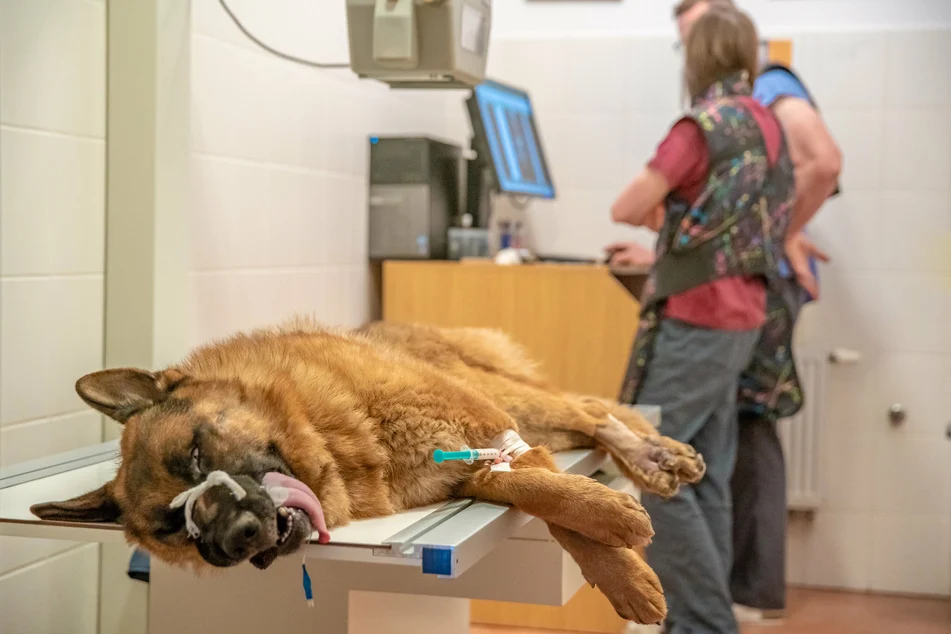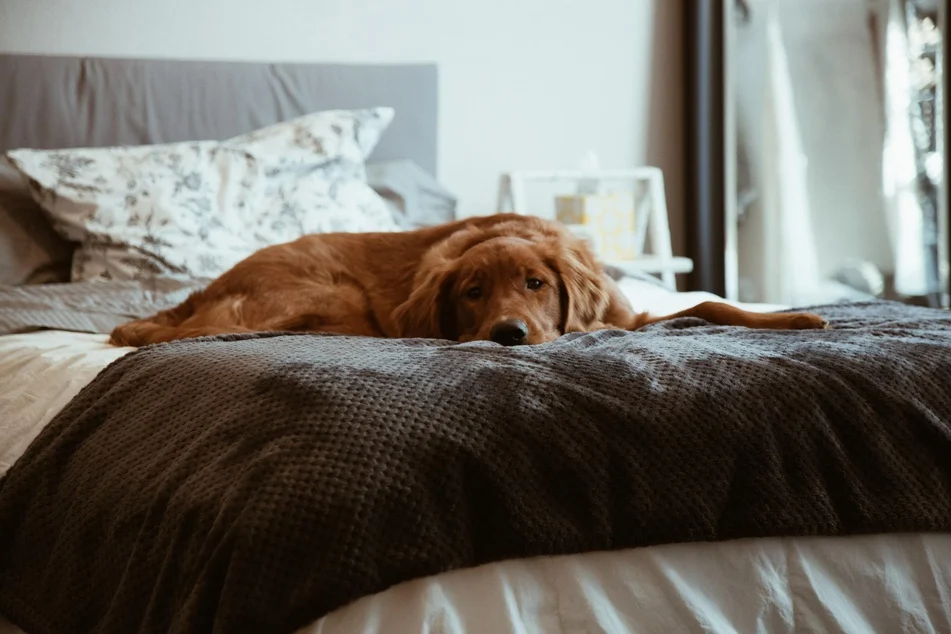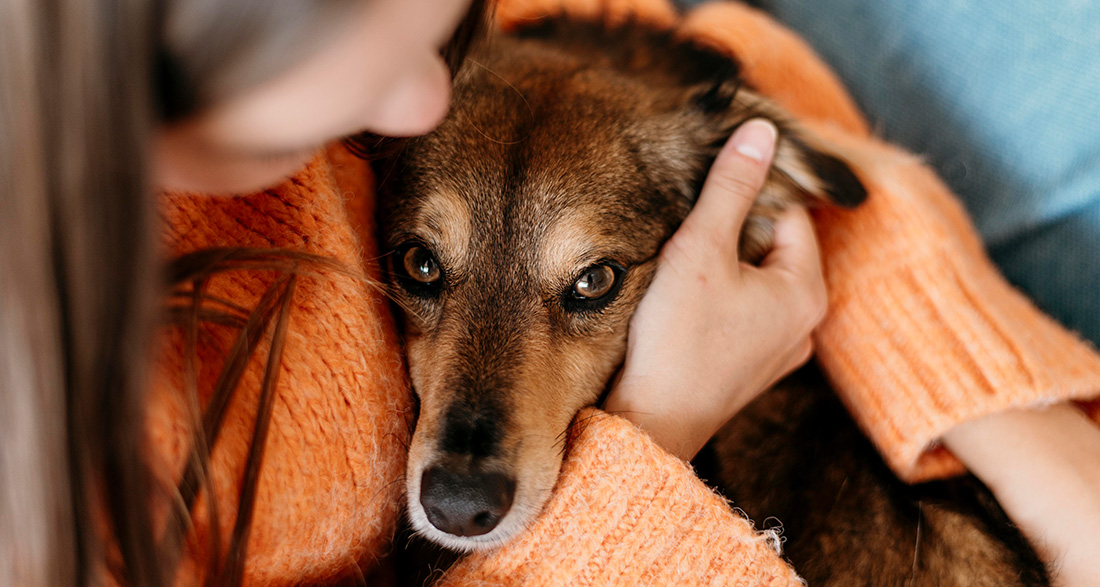It is a nightmare for every dog owner when their beloved four-legged friend suddenly starts gagging without apparent reason after playing or walking. If the condition worsens, it might be a gastric torsion, and quick action is required.
When a dog experiences gastric torsion, it usually has drastic consequences for the animal and often leads to death.
Unfortunately, this life-threatening condition is not sufficiently researched in veterinary medicine, and the exact causes are unclear, making it all the more frightening for some dog owners.
Thanks to studies and examinations, we do know what organically happens in a dog during gastric torsion, which dogs and breeds are particularly susceptible, and to what extent the misbehavior of dog owners can contribute to gastric torsion.
The essential information about gastric torsion in dogs and tips on how to prevent it in your dog are provided in this dog guide.
Which dogs are particularly susceptible?
Larger dog breeds with a narrow and deep chest are particularly vulnerable to gastric torsion.
Dogs that eat very quickly or rarely rest due to hyperactivity also have an increased risk of gastric torsion. It has also been found that the dog’s genes play an important role.
The following dog breeds, for example, may develop gastric torsion:
- Barsoi
- Bernese Mountain Dog
- Bloodhound
- Great Dane
- German or Danish Mastiff
- German Shepherd
- Doberman
- Golden Retriever
- Standard Poodle
- Irish Red Setter
- Weimaraner
What makes gastric torsion so dangerous?
When a dog’s stomach twists around its longitudinal axis, the entrance and exit are blocked. As a result, the gases produced in the digestion process cannot escape, and the stomach expands, causing intense pain for the dog. Moreover, the entire digestive process of the animal is interrupted.
However, affected dogs often die because the distended stomach compresses the surrounding areas, organs, and veins. It is particularly dangerous when the twisted stomach constricts the great vena cava, disrupting the dog’s circulatory system. Blood can no longer flow back to the dog’s heart, and the dog goes into shock, leading to the rapid death of the animal.

Symptoms
Gastric torsion in dogs requires swift action, so dog owners should try to recognize the corresponding symptoms as early as possible.
The following symptoms indicate gastric torsion in dogs:
- “Dry heaving,” unsuccessful vomiting, or vomiting mucus
- Increased salivation
- Pale mucous membranes
- Refusal of further food intake and not drinking
- Inability to defecate and urinate
- Difficulty breathing
- Pain (evident through whining or whimpering)
- Restlessness, frequent changes in position
In the further course, the following symptoms occur:
- Bloated abdomen (feels like a drum or as if the dog swallowed a soccer ball)
- Apathy or lethargy
- Sluggishness
- A lying dog unable to stand up
If some or all of these symptoms occur in the dog, a veterinarian should be consulted immediately.
What helps dogs with gastric torsion?
If there is suspicion of gastric torsion in a dog, a visit to the veterinarian is essential. Untreated gastric torsion in dogs ends fatally within a very short time.
It is best for dog owners to call the veterinarian beforehand, expressing their suspicion of gastric torsion, so that the veterinarian can prepare everything necessary for the dog’s treatment and no time is lost.
When there is suspicion of gastric torsion, the veterinarian will likely administer an infusion to stabilize the dog’s circulation in the first step. The dog will then undergo an X-ray. If it is gastric torsion, the X-ray will show that the stomach is divided and resembles a “dunce cap.”
If the suspicion of gastric torsion is confirmed, emergency surgery is mandatory. The dog’s stomach is degassed first, then twisted back, and in most cases, it is immediately secured to prevent the stomach from twisting again.

Preventing gastric torsion in dogs
Unfortunately, gastric torsion in dogs is not yet sufficiently researched to specify the exact causes. Nevertheless, factors in feeding have been identified that can contribute to gastric torsion in dogs. Dog owners can manage these factors in their interactions with their four-legged friends.
- It is recommended to feed the dog smaller portions several times a day to prevent the stomach from becoming too heavy, allowing sufficient time for digestion.
- Contrary to the original belief, the dog should not be fed elevated unless instructed by the veterinarian.
- Dog owners should give their dog a rest after eating, lasting at least an hour. The dog should also relax before eating. Playing or going for a walk means positive stress for the dog. To digest well, the dog should relax.
- Also, during feeding, if possible, dog owners should let the dog eat in peace and give it enough time. It is impossible to shield the dog from all stress factors in the environment, but they can be minimized somewhat.
- Additionally, dog owners should not give the dog too much dry food with large amounts of liquids during digestion, as this can lead to increased gas formation in the stomach. Generally, a varied and balanced diet is recommended.

Gastric torsion in dogs cannot always be prevented because there are factors that dog owners cannot influence. However, keeping an eye on the dog allows for early detection of symptoms and quick action.


